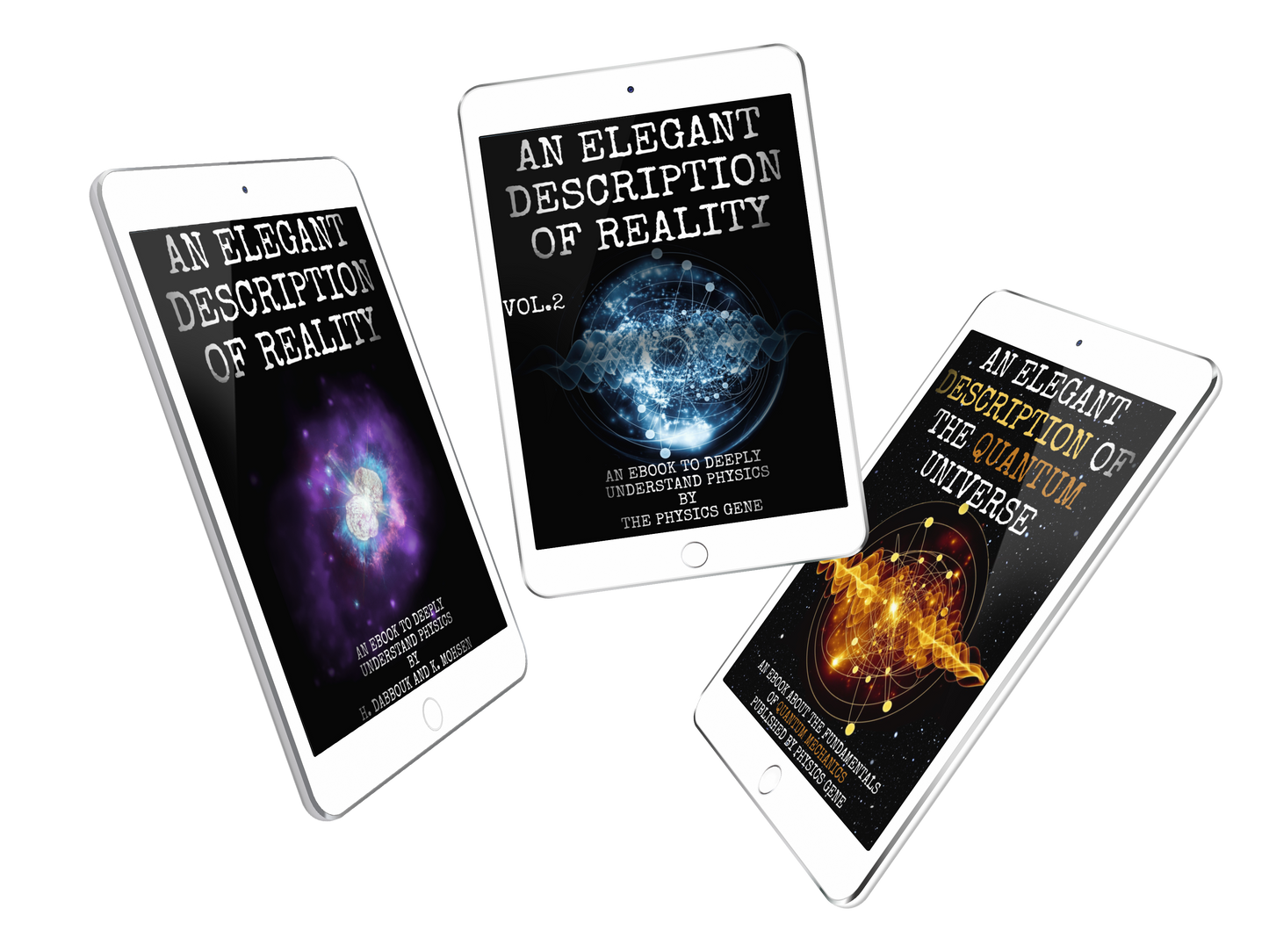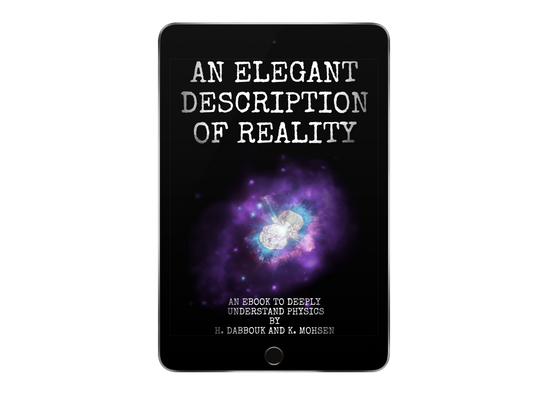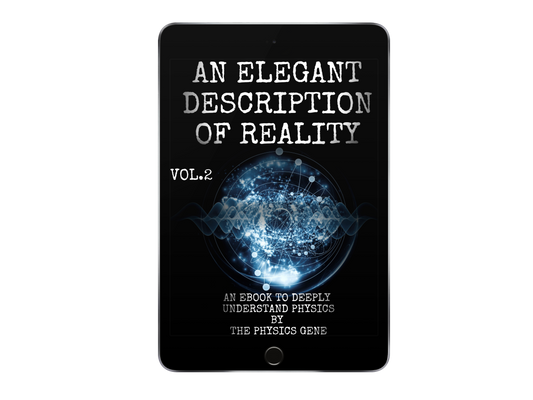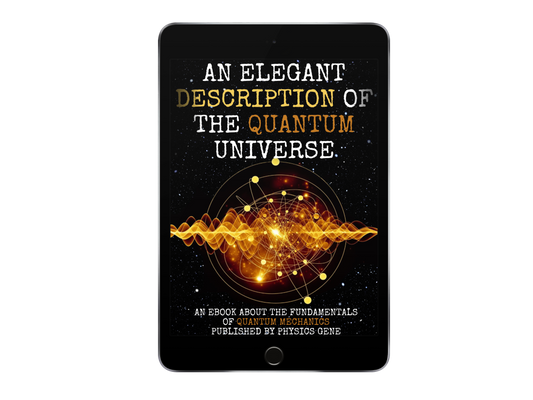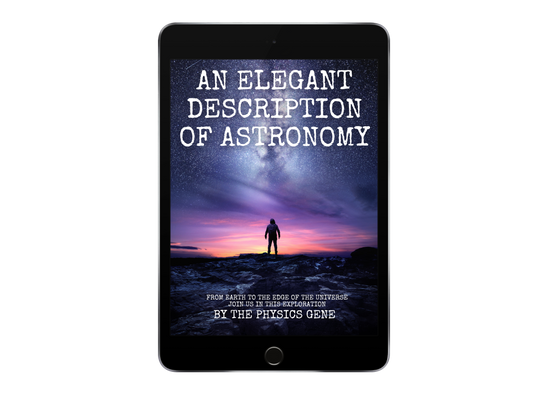Time and space are two of the most fundamental notions in physics, yet they’re also among the most mysterious. There relationship is very intricate too when we fit in speed inside. If I asked you how far two places are, answering with a 10 minute walk is a suitable answer even though it’s different units. This is the same reason why we say the sun isWe casually say things like “I don’t have enough time” or “Space out a bit,” never suspecting the profound implications beneath those words. Physicists for centuries have grappled with these concepts, proposing fresh ideas that turn our intuition on its head. Our everyday sense of time – something that steadily ticks forward – is a product of our brains. Meanwhile, our sense of space – that it’s some empty stage where events happen – also hides deeper, stranger realities. So let’s explore this peculiar relationship between time and space, and why many scientists and philosophers have claimed that time might be nothing but space in disguise, or perhaps an “illusion” crafted by the human mind.
The Subtlety of Time in Everyday Life
We experience time in an undeniably personal way: you can recall a memory from yesterday, or plan an event for tomorrow. This constant flow from “past” to “future” feels so obvious that we rarely step back to question how real this sensation is. Is the “passing” of time an actual, objective feature of the world, or is it simply how our human consciousness perceives the universe?
Albert Einstein famously once said, “The distinction between past, present, and future is only a stubbornly persistent illusion.” That’s a bold claim, right? Our entire lives revolve around the notion that the past is gone, the present is “now,” and the future is up for grabs. But from a purely physical standpoint—especially in the realm of relativity—the laws don’t single out any moment as the “now.” Equations work the same whether you’re describing something happening next week or next year.
This already hints at something radical: maybe time doesn’t pass in the way we think it does. From the perspective of mathematics, time can be treated as just another coordinate—like a direction, akin to up, down, left, or right, only with some differences in how we measure it. That’s where the idea that time can be “just another dimension” comes from. But how did physicists come to that conclusion, and why is it so difficult for our brains to accept?
Space and Time in Relativity
Let’s rewind a bit to the early 20th century. Before Einstein developed his theories, physicists treated space and time as entirely separate. You had your three dimensions of space (height, width, depth) and a distinct, universal time that ticked the same for everyone. This was largely the worldview established by Newton: the clock in your kitchen was effectively the same clock ticking away for the entire cosmos.
But experiments showed something strange: the speed of light is constant no matter how you move relative to the source of that light. This was the big clue that something was off with the intuitive view of separate space and time. Einstein’s Special Relativity said: actually, people moving at different velocities measure different intervals of time and space, but they all measure the speed of light identically. This forced the merging of space and time into a single four-dimensional entity called “spacetime.”
In Minkowski’s famous phrase, “Henceforth space by itself, and time by itself, are doomed to fade away into mere shadows, and only a kind of union of the two will preserve an independent reality.” Physically, that means we can no longer say there’s an absolute “past, present, and future.” Instead, how time flows—and even which events are considered simultaneous—depends on your frame of reference, how fast you’re moving, and where you are. For example, two observers moving relative to each other might disagree on whether Event A or Event B happened first, or if they happened simultaneously. It’s not that one is “wrong”; both descriptions are correct within their reference frames.
The Geometric View: Time as a Direction in Space
All of this might be a bit mind-boggling, so let’s go for a simpler analogy: Suppose you’re traveling through a large field. You can walk north, south, east, or west. Nobody else can say your “north” must line up exactly with theirs, because they might be standing at a different point, or might call your “north” more like “north-northeast.” In relativity, time can act almost like one of those directions—though not exactly the same, because it has a different sign in the equations, giving it a different character from the three spatial dimensions. But still, the gist is that “time” is locked together with “space.” You and another observer, moving differently, might carve up that 4D spacetime in slightly different ways. I might call something “time,” you might call part of it “time” plus a bit of “space.” The big surprise is that both ways of slicing it up are correct.
So does that mean time is just space? In some sense, yes and no. Yes, in that mathematically it’s simply another coordinate on equal footing; no, in that the geometry of spacetime treats it distinctly from space, given how we measure intervals, how we can’t just freely move forward and backward in time the way we can move left and right in space. You can turn around in space, but you can’t spontaneously turn around in time (at least not according to our best understanding).
Still, from the perspective of a block universe—another interpretation of relativity—past, present, and future all coexist in a single four-dimensional tapestry. In that interpretation, the “flow” of time is just our vantage point moving along that dimension. Much like we only see a slice of a 3D object at once, we might only experience a slice of 4D spacetime we call “now.” If that’s correct, there’s nothing particularly special about “now”; it’s just the slice we inhabit. In that sense, time as we sense it—the unstoppable arrow from cradle to grave—might be an elaborate illusion, an artifact of our conscious experience.
Why Our Brains Resist This Idea
But hold on, illusions are usually something we can detect with a bit of mental effort. Like if you see a bent straw in water, you know it’s actually not bent; it’s just refraction. But we can’t easily “unsee” the passing of time. That’s because our brains, as best neuroscience can tell us, store memories of “previous” mental states but not “future” states. We have an asymmetry in how we recall events. This leads us to interpret our experiences as a chain from past to future. Even physics acknowledges an “arrow of time” in thermodynamics: the concept of entropy, which basically says that closed systems tend toward higher disorder over time, giving us a sense that time does indeed “move” in one direction.
Our conscious flow of time might then be partly an artifact of how we store and retrieve information, combined with how the universe’s thermodynamic arrow points in a certain direction. Our cognition demands cause-and-effect: you mix coffee and cream, watch them swirl together, and they don’t spontaneously separate. You see a dropped glass shatter, and it doesn’t reassemble on the table. This directionality is so deeply ingrained in experience that to call time an “illusion” feels contradictory. But that’s precisely why it’s such a fascinating concept. The laws that govern the microscopic world (like quantum mechanics) don’t strictly forbid time from running backwards; the fundamental equations work equally well forward or backward. The asymmetry—our memory of the “past,” our expectation of the “future”—emerges from a combination of initial conditions and how complexity evolves.
The “Block Universe” and Eternalism
So, let’s introduce the idea of the “block universe,” also called “eternalism.” In this model, the entire four-dimensional spacetime manifold “already exists” in some sense. It’s as if you took every “slice” of time—past, present, future—and stacked them up. Our consciousness, or “now,” is just a slice moving through it. The reason it’s so tricky to digest is that we feel so strongly that the past is gone and the future is not yet real. But from the viewpoint of the block universe, each moment is equally real. All those slices coexist.
One reason many physicists and philosophers like the block universe view is that it fits so neatly with relativity. If different observers slice up “time” differently, then saying only my slice is “real now” becomes suspicious. Because to another observer, my “now” might be partially their “past” or “future.” If reality is observer-dependent, then it’s simpler to say: all slices (all times) exist, and the observer’s choice of slice doesn’t confer a special status on one piece of spacetime over another. This perspective robs time of its distinction as “flowing,” turning it instead into a dimension akin to space, laid out once and for all.
Time as an Emergent Concept
Another angle is the idea that time could be emergent. In some advanced theories of quantum gravity, especially in certain approaches to “loop quantum gravity” or in “AdS/CFT correspondences,” time doesn’t appear as a fundamental ingredient. Instead, time emerges as a property of entangled states or from correlations within the system. While still speculative, these theories push the idea that time is not only an illusion in a relativistic sense, but it literally arises from deeper structures in the universe.
This is reminiscent of how temperature is an emergent property of molecules colliding. Temperature’s “real” enough in our daily lives, but on the microscopic scale, there’s only fast or slow moving particles—no single “temperature” physically floating around. Similarly, it might be that on some deeper plane, there’s only a web of relationships or wavefunction states, and “time” is our macroscopic approximation of how those states evolve.
The Puzzle of Our “Now”
A big puzzle in all these discussions is the “problem of the now.” We live in a brain that feels a present moment, a fleeting bubble that soon becomes the past. Even if you intellectually believe in the block universe, you can’t help but experience time flowing. One explanation is that while the total structure of spacetime is static, our consciousness is not. We accumulate memories of “earlier slices” and no memories of “later slices,” so it feels as if we’re traveling forward.
A popular metaphor is to imagine a flip book or the frames of a movie reel. All the frames exist simultaneously, but you only watch them in a particular order. Each frame in that reel could be labeled as a different “time.” Our minds are effectively the projector playing those frames in sequence. So from inside that movie, the characters would absolutely sense a forward motion of time. Yet a film archivist outside the story would see that every frame is there in the same box—no “flow,” no special “now.” Is that how our real universe operates? Possibly. Our brains might just be stuck inside the film, forced to see the story as it moves forward.
Why We Can’t Simply “See” Time as Space
We can walk around the room and see left, right, forward, or backward, but we don’t see the next minute in the same way. Physically, you can’t just step into your future dinner the way you step onto your back porch. Part of that is because time has a different geometric signature. If space is considered to have a “positive, positive, positive” geometry (in a simplified sense), time is “negative.” That difference is reflected in how intervals of spacetime (sometimes called the “spacetime interval”) are measured. One reason we can’t literally travel in time the way we do in space is that we’d need imaginary or faster-than-light speeds to rotate ourselves in that dimension. So while time is unified with space, it’s not exactly identical.
Another important reason is that the laws of physics enforce certain constraints, like causality. The speed of light effectively acts as a cosmic speed limit that keeps cause-and-effect relationships in order. This is no small matter—time’s “direction” is intimately tied to preserving that causal structure. A major revolution would be needed to bypass these constraints (think: hypothetical wormholes or exotic matter enabling time travel). Mainstream physics can’t discard causality lightly; so we remain in a universe where time is “like” a dimension, but not so fully symmetrical that we can roam in it at will.
Time, Illusion, and Human Experience
So, do we live in an illusion? In everyday life, time feels real and unstoppable. Our daily schedules revolve around minutes and hours. We plan meetings and birthdays. None of that is invalid just because there’s a deeper, more nuanced structure to the universe. The same way your sense of color is a genuine experience of how your eyes interpret different wavelengths of electromagnetic radiation, your sense of time is a genuine experience of how your memory and brain interpret changes in states. It’s real to you. But from the vantage of fundamental physics, this time sensation is not necessarily the best guide to what’s ultimately out there.
One parallel is how each of us sees the world in three spatial dimensions. Other animals might see fewer or more colors, different focusing capabilities, and so forth. Our “reality” is basically the slice or the mode of existence that our biology grants us. With time, we sense it as a one-way track we’re riding. Yet at the level of relativity, we might just be sliding through a pre-existing block. If that’s correct, then your birth and your great-great-great grandchildren’s distant future all exist in that block, albeit in different slices. Does that blow your mind a bit?
Tying It All Together
Time might be intangible, ephemeral, and deeply personal. But from a physical perspective, it merges seamlessly with space into a four-dimensional continuum. While time has certain distinct properties—like the inability to reverse or stand still for us in any practical sense—many of these distinctions evaporate when we do the math of relativity. Past, present, and future no longer stand on separate pedestals. Instead, they become reference-frame-dependent illusions that are more about our consciousness than they are about the underlying structure of reality.
Likewise, if we accept the possibility that time emerges from deeper quantum processes, then it might not just be that time is “like” space—time could vanish altogether if those processes were dissected further. But whatever theory eventually unifies general relativity and quantum mechanics in a final, perfect vision might reveal an even weirder cosmos. Maybe we’ll discover that what we call “time” is just a byproduct of how subatomic states entangle and measure each other.
For now, though, we can relish this bizarre truth: we live in a universe where something as basic as time can become perplexing the moment we poke it from a scientific angle. Our sense of time as unstoppable might be akin to the illusion of a bent straw in water, only far more embedded in our daily cognition. It’s not easy to see around it. But that’s the beauty of physics. Our minds have evolved to interpret the world in a certain way—yet the universe in all its glory can upend our most basic intuitions.
So the next time you glance at your watch, panicking that you’re late, or when you catch yourself thinking about how “time flies” or “drags,” take a brief moment to reflect: perhaps time doesn’t fly or drag at all. Perhaps we’re just wandering through a complicated geometry where time and space interweave. The ticking clock might be a handy measurement tool, but it’s not the perfect reflection of how reality operates. Instead, it’s part of the narrative we collectively construct to navigate our daily affairs. And if in the big scheme of the cosmos that narrative is partly an illusion, well, that only makes it more precious—and a true testament to the mind-blowing depth of the universe we inhabit.








